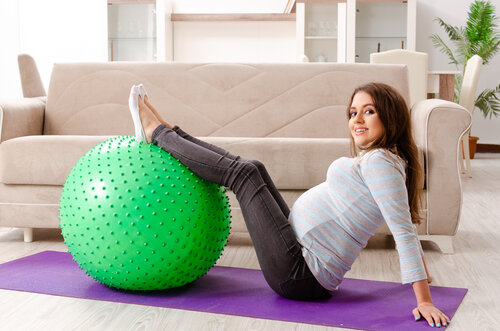
Pilates For Pregnancy - How it Can Help With Common Discomforts During Pregnancy
Posted by Alexandra Todd on 2023-03-24
Pilates for pregnancy is a great way to prevent common discomforts during pregnancy. It can reduce the amount of pain you experience during labor and help you avoid the uncomfortable second stage of labor. In addition, it can strengthen your pelvic floor muscles and stabilize your back.
Prevents diastasis recti
Diastasis recti is a condition that is very common during pregnancy. It is often caused by repeated abdominal strain. This separation of the rectus abdominis, or six-pack abs, can lead to other complications. The separation of the abdominal muscles may cause back pain, urinary incontinence, and poor posture.
In order to prevent diastasis recti, women should maintain a healthy weight, not lift heavy objects, and avoid over-stretching their abdominal muscles. They also should exercise regularly to keep their core strong.
Diastis recti is a common condition that affects around half of pregnant women. It can be treated, and in many cases, it will heal on its own. However, it can cause other complications and affect a woman's body image.
Women who develop diastasis recti usually go into labor without knowing that they have it. It is caused by a stretch of connective tissue called the linea alba. When pushing, the linea alba is stretched, and it causes the abdominal muscles to separate.
Stabilizes the back and pelvis
During pregnancy, expectant mothers can experience pain in the lumbar and pelvic regions. The pain is caused by pregnancy hormones, which increase joint laxity and flexibility. These changes can lead to lower back pain, especially when standing or sitting. Fortunately, non-invasive approaches can help to manage these symptoms.
Pelvic stabilization is a technique that can be used to reduce pain and improve mobility. This method includes stretching the vertebrae and realigning the bones. It is especially helpful for pregnant women.
Various studies have been conducted to determine the effects of stabilization exercises on the pelvis and back. Most of these studies concluded that the exercise has a positive effect on reducing pelvic girdle pain. However, results vary depending on the type of pain and the timing of the intervention.
Strengthens pelvic floor muscle
Strengthening your pelvic floor is important for pregnant women. This is because it can help prevent a variety of problems. Besides protecting the bladder, the muscles also support the uterus.
Exercises like Kegels can help strengthen your pelvic floor. It's no secret that the pelvic floor is a complex network of muscles and connective tissues. However, these muscles are subject to stress during pregnancy and childbirth. In addition, hormonal changes and birth methods can put additional strain on the muscles.
The best way to strengthen your pelvic floor is to exercise it. There are several exercises that are recommended, including the following:
Kegels: Kegels are a simple exercise that involves squeezing the pelvic floor muscles. You can do this while sitting or standing. If possible, you can hold this contraction for at least ten seconds.
Reduces labor pain intensity
Pilates exercises for pregnancy is a healthy way to decrease pain during childbirth. In addition to reducing the pain, this exercise also helps prepare expectant mothers for the birth experience. The focus of Pilates is on strengthening abdominals and pelvic floor muscles.
Several studies have been conducted to assess the benefits of Pilates exercises for pregnant women. A few studies have shown that this exercise can help reduce the number of birth interventions and reduce pain during labor. However, a more thorough examination of these effects should be done to address concerns about pain during labor, the amount of intervention during delivery, the duration of the first and second stages of labor, and the satisfaction of women with the childbirth process.
This study was a prospective randomized controlled trial that investigated the effects of clinical Pilates exercises on labor outcomes. It was conducted at selected health centers in Iran.
Prevents prolonged second stage of labor
Preventing a prolonged second stage of labor is no easy feat. There are several pitfalls to avoid, such as excessive use of oxytocin or the all-too-common cesarean surgery. A well-crafted exercise plan can go a long way in ensuring a smooth, stress-free birth. The best part is that the exercise can be done at home, in the office, or on the road. The benefits are well worth the effort. Of course, the most important factor is to find the right fit for you. This article provides an overview of the most effective options, as well as anecdotes from patients and practitioners.